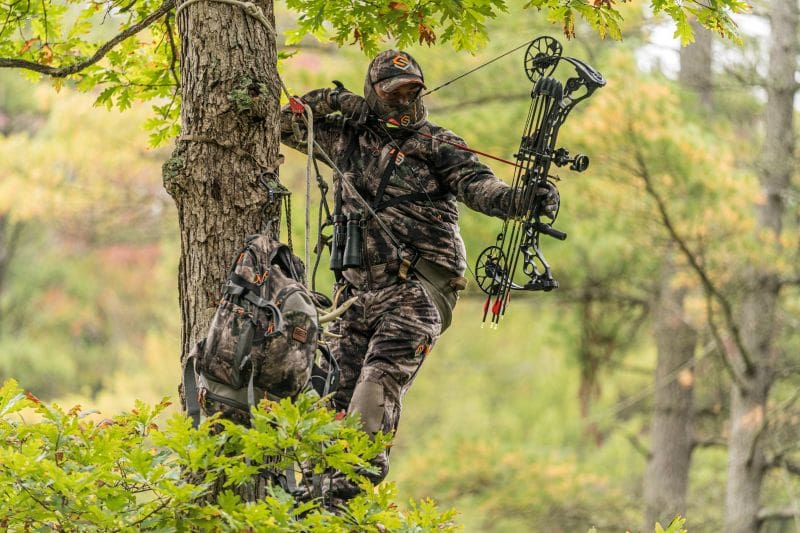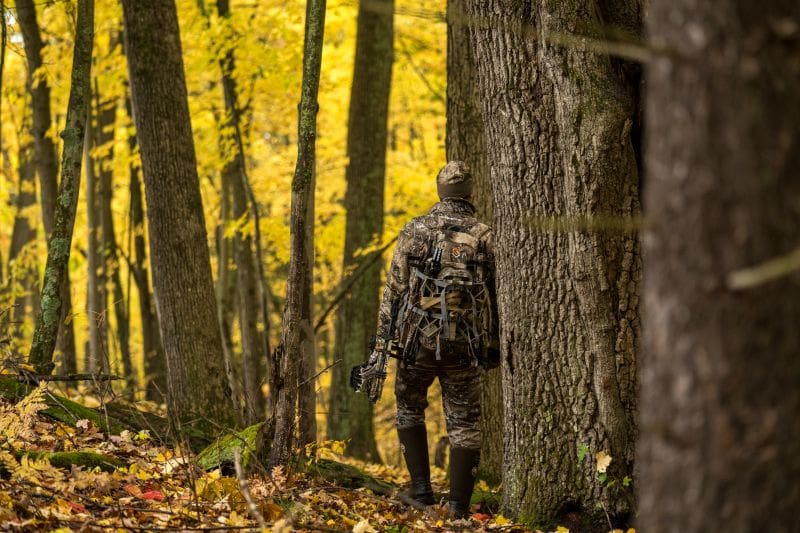There’s something about an October cold front that changes the game for whitetail hunters. When the air cools and pressure rises, the first authentic hint of fall moves through the woods, and deer start moving. For mobile hunters, especially those who hunt from a saddle, these short, high-percentage windows are the ideal time to go after deer. Success depends less on tradition and more on adaptability, and nothing demonstrates adaptability like a lightweight setup you can carry on your back everywhere.
When October rolls around, I load up my ScentLok BE:1 Grinder Treestand Pack with everything I need for saddle hunting, including climbing sticks, platform, saddle, and all the small essentials like my bow hanger and gear hook. Inside the pack, I keep my must-have accessories: rangefinder, binoculars, grunt call, scent, wind checker, limb saw, and a few other handy items. Once it’s packed, I set it beside my bow, ready to grab it at a moment’s notice, just like keeping an overnight bag by the door when you’re waiting for a baby to arrive. When the time comes, I grab my gear and head out!
Why October Cold Fronts Matter
October can be a tricky month to hunt. One day can feel like the heat of late summer with temperatures in the mid-eighties, and the next can bring the crisp bite of November air after a classic fall cold front. Both research and experience show that deer movement peaks during and right after those first cool-downs of the season. The drop in temperature eases stress, barometric pressure climbs, and bucks start to feel the rut drawing near. Together, these shifts spark more daylight activity, making those few days some of the best opportunities of the pre-rut.
The challenge is that these ideal conditions don’t last long. That’s where a mobile hunter shines, able to adjust on the fly instead of waiting for deer to show up. If you can, save a little vacation time so when the weather turns, you can slip out of work early and be in your saddle or stand when it counts.
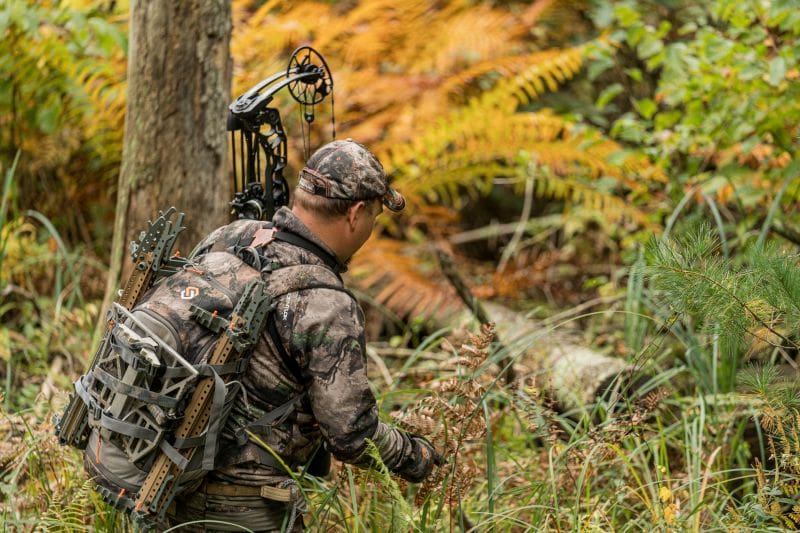
The Mobile Advantage
Traditional stand setups need weeks of prep, trimming, and hanging. By the time a cold front arrives, you might be stuck in one or two spots that may or may not be hot. A saddle hunter or mobile-style hunter using a climbing or hang-on stand, however, can pivot and quickly be in the woods ready to hunt. For example, with a saddle, compact climbing sticks, and a lightweight pack, you can move to fresh signs, hunt the wind precisely, and take advantage of short-term opportunities without disturbing your best stands.
This mobility is essential in October as patterns shift daily. Deer move from summer food to fall browse, acorns, and staging areas. If you find fresh rubs, scrapes, or trails that have shown up overnight, you can hunt over them without hesitation within the hour. As the rut heats up towards the end of October, cold fronts can be the icing on the cake of an already exciting bowhunting season.
Scouting in Real Time
Cold fronts often push deer to wander into new areas, especially along the edges of food sources and staging cover. Mobile hunters should rely on both boots-on-the-ground scouting and digital maps. Spend evenings glassing field edges ahead of a front, and use mornings to walk creek crossings, pinch points, or oak flats. When you find fresh sign, tracks, droppings, rubs, or scrapes, you’re already well on your way to setting up in the right spot.
One of the biggest perks of a saddle setup is flexibility. There’s no need to cut shooting lanes weeks in advance or haul in a heavy stand. Just pick the right tree, climb quietly, and you’ll be ready to hunt before the next wave of deer movement begins.
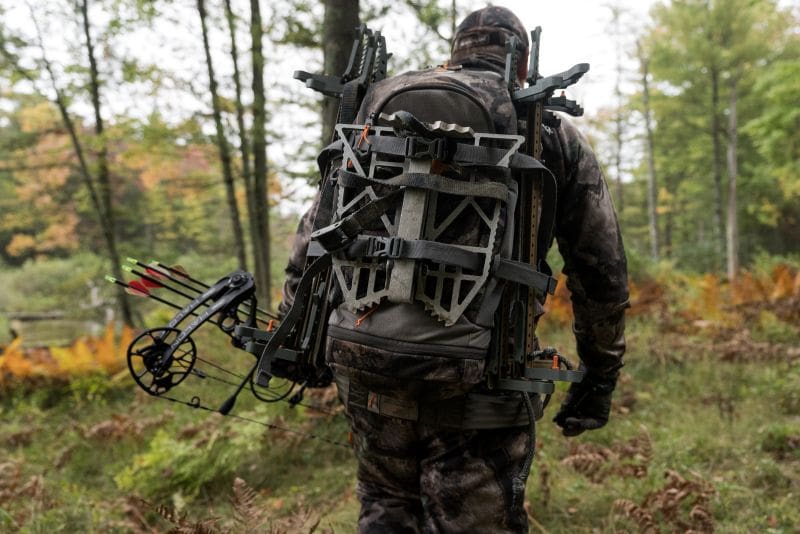
Playing the Wind
October cold fronts not only bring cooler air but also new winds. Mobile hunters can adapt instantly. If the north wind creates the perfect setup for a bedding-to-feeding route you’ve been watching, you can slip in without being stuck in a permanent stand that no longer works. Saddle hunters have the freedom to set up on the “off side” of the trail, change their angle on the fly, or even move mid-hunt if thermals or deer patterns suddenly shift. It’s common for a saddle hunter to relocate in the middle of a hunt when wind or deer behavior unexpectedly changes.
The Grab-and-Go Mindset
The key to making the most of October cold fronts as a mobile hunter is being prepared before they hit. Keep your saddle gear, climbing sticks, and pack organized and ready to go. By the first or second week of October, the back seat of my truck is always loaded with my backpack full of saddle gear, my bow, and my ScentLok Stuff Sack packed with clothes. When the forecast shows a twenty-degree drop and rising pressure, that’s not the time to be rummaging through the garage or untangling gear. Having everything staged and ready means you can be in a tree while everyone else is still talking about how good the hunting “should” be.
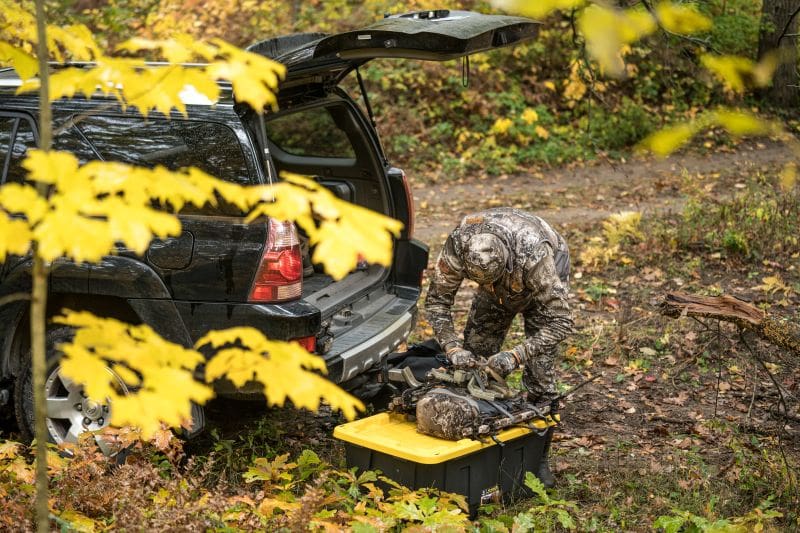
I like to think of October cold fronts as one of God’s gifts to whitetail hunters because they don’t last long and reward those who move fast. In September, deer stick to summer feeding patterns, and by November, the chaos of the rut takes over. But October, that’s cold-front season. While some hunters wait for the rut to heat up around their fixed stands, mobile hunters have the edge. When a front rolls through, you can move in quickly, set up where fresh sign appears, and catch bucks cruising in daylight. So when the forecast shifts, don’t overanalyze it, grab your gear, slip into the woods, and take advantage of the fleeting magic that makes October hunts so special.
